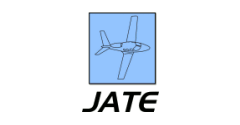Abstract
Introduction: Flights of general aviation aircraft in icing conditions pose safety hazards especially since few airplanes are equipped with ice protection systems (FIKI). Herein, we sought to answer the following questions not previously addressed: (i) Has the general aviation icing-related accident rate declined over time? (ii) Which phase(s) of flight lead(s) to the highest fraction of fatal accidents? (iii) Do general aviation pilots adhere to safe practices when operating in forecasted icing?
Methods: Retrospectively, icing-related accidents were per the National Transportation Safety Board database. Prospectively, non-FIKI single-engine airplanes, operating in forecasted icing, were tracked (January–March 2023) using FlightAwareR. Presumptive icing was determined with METARs/modelled Skew-T data. Statistical tests employed Poisson distributions/Pearson chi-square analyses. Results: In a retrospective analysis, despite a nonstatistical (p=0.621) downward trend in icing-related accidents (2000–2019), over half of mishaps were fatal, a fraction unchanged (p=0.842) over the two decades. Loss-of-control represented the terminating event with the highest proportion of fatal outcomes (85%). Accidents involving takeoff-climb ice accretion were overrepresented for fatal outcomes (66%). In a prospective study arm, of 300 non-FIKI flights operating in forecasted icing and tracked in real time, 65% departed or descended/landed (44%) in presumptive icing.
Conclusions: A modest downward trend in icing-related accident rate and an undiminished high fraction of fatal mishaps rationalize focused training of pilots operating non-FIKI aircraft in areas prone to icing. Specifically, two novel observations warrant emphasis: (i) an approximately threefold higher icing-related fatal accident fraction compared with all general aviation accidents and (ii) the high proportion of lethal mishaps due to takeoff-climb ice accretion.
Recommended Citation
Boyd, Douglas PhD and Guinn, Thomas PhD
(2024)
"Deficiencies in Safe Practices by Pilots Operating General Aviation Aircraft in Weather Conducive for Icing,"
Journal of Aviation Technology and Engineering:
Vol. 13:
Iss.
1, Article 2.
Available at: https://doi.org/10.7771/2159-6670.1294


